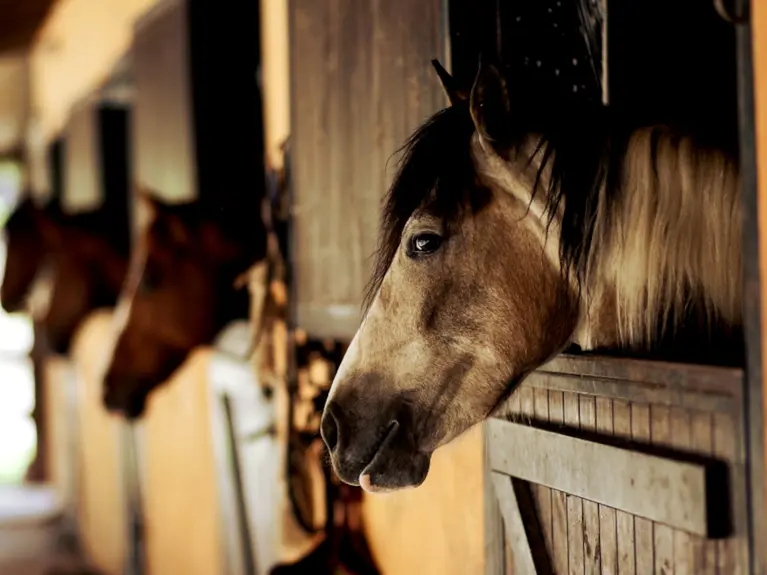
From pasture to stable: what to watch out for in nutrition
Autumn has officially begun. With dropping temperatures and increased rainfall, your horse will spend less time in the pasture and more time in the stable. This means a change in diet. In addition, stabled horses drink and move less, which can increase the risk of colic.
Tip 1: Provide plenty of fresh water
A horse on pasture eats a lot of grass. Grass consists of about 84% water, so grazing alone supplies your horse with a significant amount of fluid. Water is essential for moving food through the intestines. As the weather turns colder, horses tend to drink less. Combined with reduced grass intake, this can lead to dehydration and less effective transport of nutrients and removal of waste products. The risk of colic rises when a horse takes in less water. That’s why it’s important to carefully monitor water intake in the stable.
Tip 2: Switch gradually from grass to hay
The horse’s digestive system is designed to process large amounts of fiber-rich feed. When grass intake decreases, the risk of impaction increases. Provide sufficient high-quality forage to stimulate digestion. When switching from grass to hay (or to a new supply of hay), the digestive system needs time to adjust. Make this transition gradually to minimize the risk of digestive problems.
Tip 3: Adjust concentrates gradually
During the winter months, horses are often fed more concentrates than in summer. It’s important to increase the amount gradually, giving the digestive system time to adapt to the new ration. When the temperature drops, opt for additional hay or silage instead of more concentrates. Forage acts like fuel to help keep your horse warm, as digestion produces significant metabolic heat.

